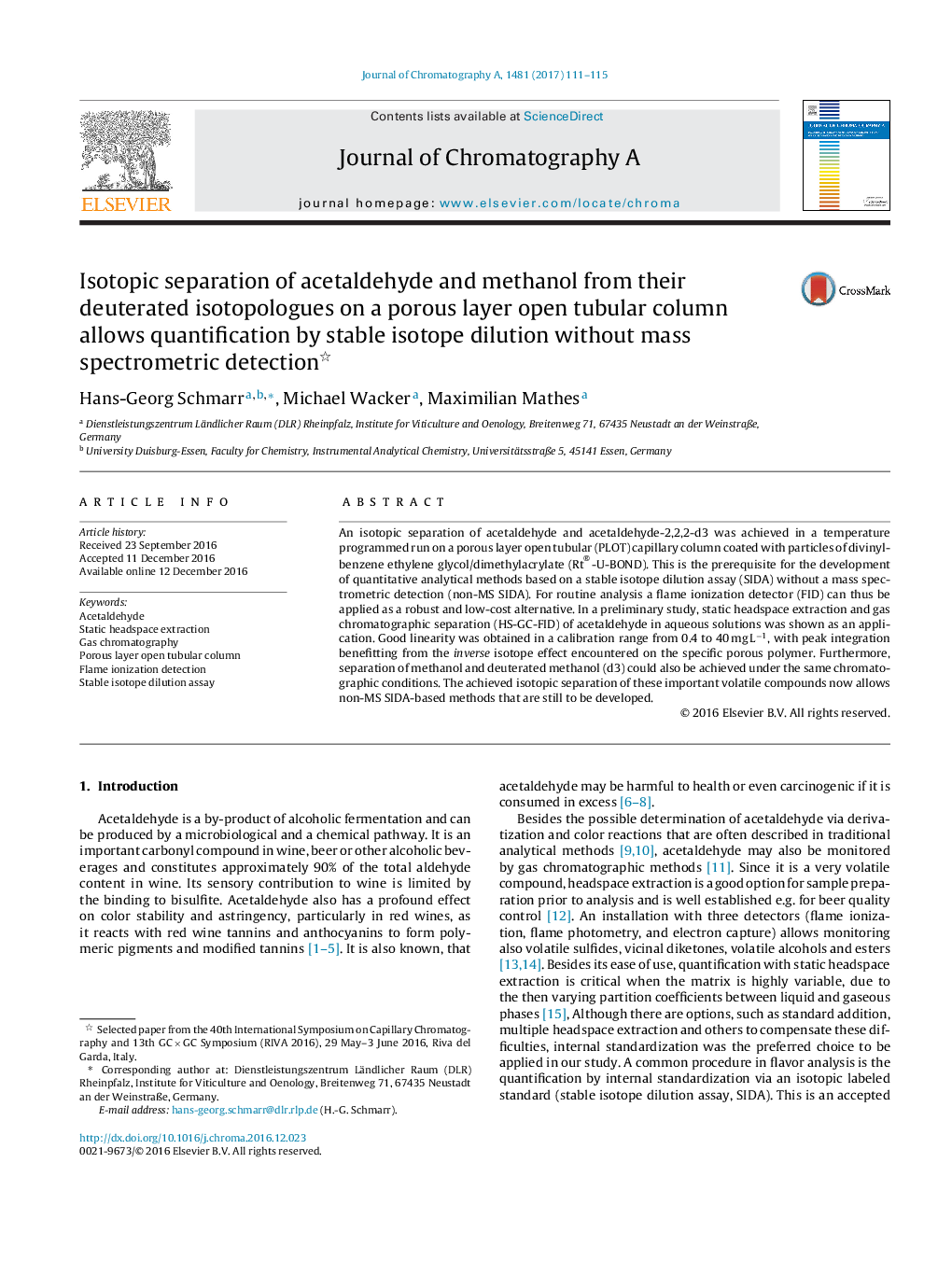| Article ID | Journal | Published Year | Pages | File Type |
|---|---|---|---|---|
| 5135928 | Journal of Chromatography A | 2017 | 5 Pages |
â¢Isotopic separation of acetaldehyde and methanol from their deuterated isotopologues on a porous layer open tubular column.â¢Inverse isotope effect on divinylbenzene ethylene glycol/dimethylacrylat as polymer.â¢Isotopic separation allows non-MS SIDA-based quantification by simple HS-GC-FID.
An isotopic separation of acetaldehyde and acetaldehyde-2,2,2-d3 was achieved in a temperature programmed run on a porous layer open tubular (PLOT) capillary column coated with particles of divinylbenzene ethylene glycol/dimethylacrylate (Rt®-U-BOND). This is the prerequisite for the development of quantitative analytical methods based on a stable isotope dilution assay (SIDA) without a mass spectrometric detection (non-MS SIDA). For routine analysis a flame ionization detector (FID) can thus be applied as a robust and low-cost alternative. In a preliminary study, static headspace extraction and gas chromatographic separation (HS-GC-FID) of acetaldehyde in aqueous solutions was shown as an application. Good linearity was obtained in a calibration range from 0.4 to 40 mg Lâ1, with peak integration benefitting from the inverse isotope effect encountered on the specific porous polymer. Furthermore, separation of methanol and deuterated methanol (d3) could also be achieved under the same chromatographic conditions. The achieved isotopic separation of these important volatile compounds now allows non-MS SIDA-based methods that are still to be developed.
